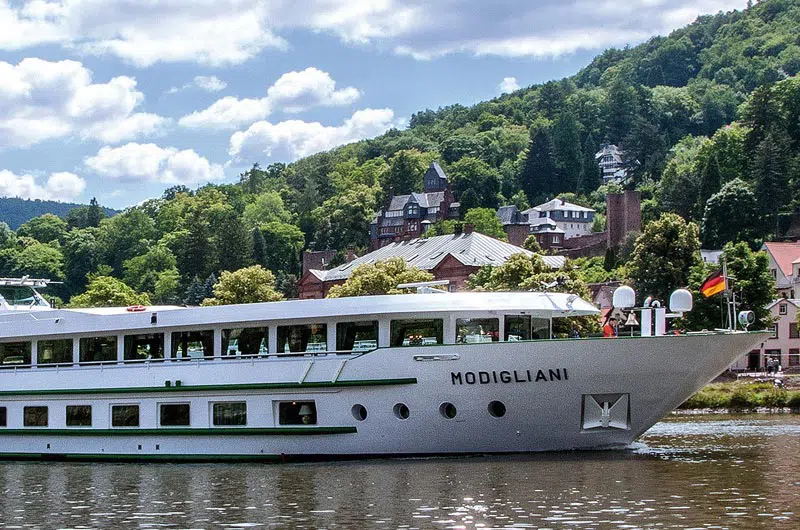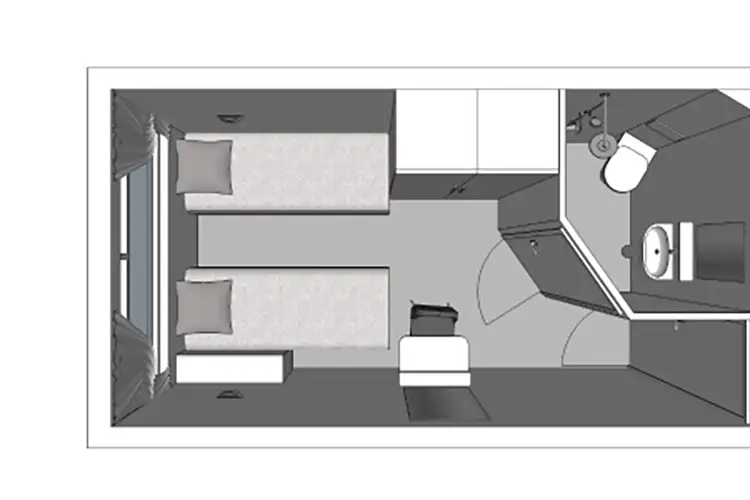CroisiEurope Danube: 7 nights from Budapest with Ms Modigliani
Aug 24, 2025
Hungary, Serbia, Croatia
Cruise itinerary
Departure Port: Budapest ➞
Landing: Budapest
-
Sunday, August 24, 2025 - not foundBudapest
-
Monday, August 25, 2025 not found - not foundMohács
-
Tuesday, August 26, 2025 not found - not foundBelgrade
-
Wednesday, August 27, 2025 not found - not foundNovi Sad
-
Thursday, August 28, 2025 not found - not foundIlok
-
Friday, August 29, 2025 not found - not foundKalocsa
-
Saturday, August 30, 2025 not found - not foundBudapest
-
Sunday, August 31, 2025 not foundBudapest
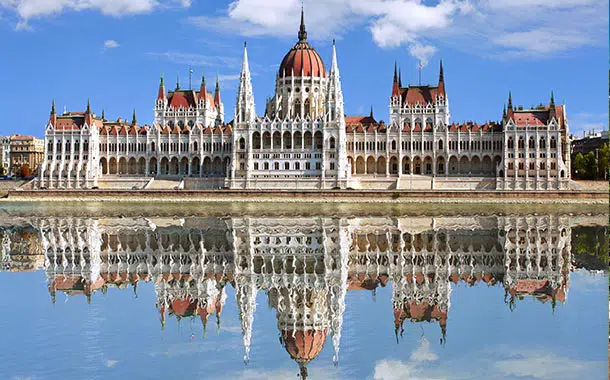
Budapest
The history of Budapest
The capital of Hungary, Budapest, is a crossroads of history and culture and the ancient charm combines with modern dynamism. Born from the union of the cities of Buda, Pest and Óbuda in 1873, Budapest has experienced Roman, Ottoman and Habsburg dominations, which have left a rich and varied legacy. Strolling through its streets, you can admire the Parliament, Buda Castle and Matthias Church.
Budapest's climate
Budapest has a continental climate, with cold winters and hot summers. The best season to visit the city is undoubtedly sping or early autumn, when the mild climate and sunny days offer the ideal setting for exploring the city on foot, discovering every hidden corners and its magnificent parks in bloom.
Attractions and places to visit
Crossed by the majestic Danube River, Budapest is famous for its thermal baths, its historic monuments and breathtaking views. Not to be missed are the Parliament, one of the oldest legislative buildings in Europe, Buda Castle, from which there are priceless views of the city, and the Chain Bridge, a symbol of unity between Buda and Pest. For a relaxing break, the Széchenyi Spa offers outdoor thermal pools, even in winter.
Local cuisine and typical products
Hungharian cuisine is a culinary adventure worth exploring. Thanks to dishes such as goulash, pörkölt and the delicious crepes called palacsinta you will discover intense falvours rich in history. You can taste them with a glass of Tokaji, Hungary's world-famous sweet wine.
Conclusion: an unforgettable holiday
Embarking on a cruise from Budapest offers a unique opportunity to start your journey by exploring a city rich in history, culture and natural beauty, before sailing across the waters of the Danube to fascinating new destinations. Budapest is not just a stopover, but a starting point for an unforgettable experience that will enrich your spirit and your heart.
The city is a mix of the French and Japanese cultures. For many years, it was a French territory, and the buildings are made in the French style. Later, the city was the first town for the trade with Japan and Korea, with its strategic position, it made a lot of merchants settle there. Some of the best attractions are the Hama-Rikyu Gardens and the Imperial Palace East Garden.

Mohács
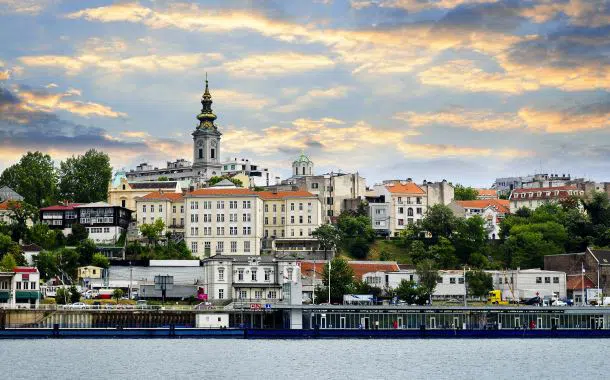
Belgrade
Discover Europe from the Heart of Belgrade!Embark on a captivating river cruise from the historic city of Belgrade, where the Sava meets the Danube. This vibrant capital offers a unique blend of ancient history and modern charm, providing an exceptional starting point for exploring Central and Eastern Europe's waterways. Sail through picturesque landscapes and discover cultural treasures, promising a journey of profound historical insight and serene riverine beauty.
Located in the center-north of Serbia and crossed by the Danube, Belgrade is the capital of the country and one of the oldest cities in Europe. Its turbulent history is reflected in its architecture, culture, and traditions. The city is home to numerous historic and monumental buildings. The best known are the National Museum, the Temple of Saint Sava, the monument to the unknown hero on Mount Aval, the old palace and the streets of Prince Michael and the thermal city of Jošanička Banja. Don't miss the fortress built on a rocky spur in the Kalemegdan park, at the intersection of the Sava and Danube, which combines Celtic, Roman, Slavic, Turkish, and Austrian architectures. The "white city" recommended for the splendor of its architecture and the unique mix of Western, Eastern, and Mediterranean influences. Belgrade is a city considered very youthful. More than 40% of the population are between 15 and 44 years old, all of whom are open and ready to have fun. The city loves to talk about the spirit of the city and is always available to provide information on everything there is to know, especially about good food, wine, and music. The inhabitants of Belgrade, like all sorts of things, love to be always on the move and, not surprisingly, the streets, sidewalks, bars, and restaurants are often crowded. On August 12th the Belgrade Beer Fest is celebrated, a very popular festival that attracts around half a million people every year, lasting 5 days.
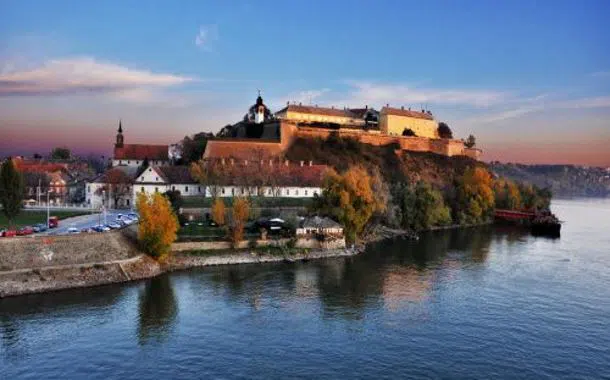
Novi Sad
Novi Sad is the administrative center of the autonomous province of Vojvodina. In the territory of Novi Sad, where human settlements dating back to prehistoric times were found. Between 1692 and 1780, during the Austro-Hungarian reign, the Petrovaradin fortress was built on the right bank of the Danube, one of the most famous fortified sites in Europe. The city of Novi Sad was built by the skilled hands of merchants and artisans, soldiers and bakers, butchers and other operators, who were registered as the founders of the city. The place is popular for its cultural mix. Its remote and recent past demonstrates the respected universal human values that lead to the culture of the inhabitants of this city. Knowledge, work, pacifism, tolerance and moderation, consider it the fundamental basis for progress. Thanks to this, the area is a unique environment that is characterized by its openness, hospitality and multilingualism. Its inhabitants, about 300,000, draw their energy from the Danube, which has shaped their temperament and the contours of this country. Also known for its festivals and cultural events such as: the Sterija Theater, Children's Games, Music Festival, International Alternative-Infantile Theater Festival, TID Regatta on the Agricultural Fair, International Fair of hunting, fishing, sports, tourism and nautical, without forgetting the largest music festival in South-Eastern Europe. Near Novi Sad there is the "Gora Fruska" a fantastic National Park and habitat for many animal species.
Ilok
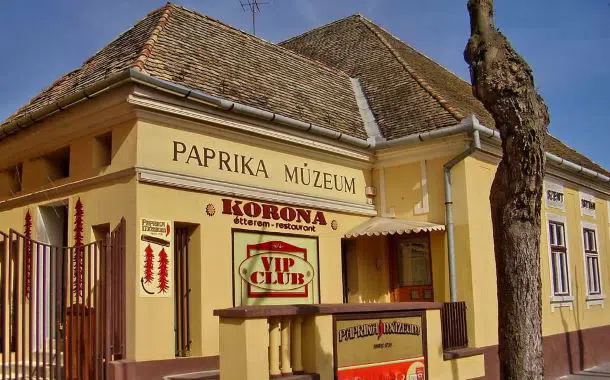
Kalocsa
Kalocsa is a city in the county of Bács-Kiskun in Hungary. Founded by the first king, Stephen I in the 11th century, establishing the Archdiocese of Kalocsa, Since then the city became an economic, ecclesiastical and cultural center.
Despite the destructions suffered by the city and its modest size, today it is famous for its baroque buildings and monuments, its popular and sparkling art, as the historic center created by the archiepiscopate, the Archbishop's Palace, its Library, the Italian baroque splendor of the main cathedral form an important part of universal culture. Its popular art was generated by farmers living in and near the city. Memories and local history are preserved by the Old Hungarian Károly Viski Museum, traditional folk dance is maintained by dance groups. The next step will be to visit the House of Paprika which houses the relics of the ancient paprika culture, full of rustic life, but at the same time it is possible to have a clear picture of the different stages of hand processing. It presents the memories of its heritage as the Kalocsa region is one of the main producing regions of one of the most famous spices. The third meaning of the city is “red gold” which in addition to the Szeged region, Kalocsa is the other center for the production and processing of paprika. If you visit our country and participate in the Kalocsa events, you will have the opportunity to become familiar with all the attractions rich in traditions, as well as celebrate together with the locals, tasting almost 50 varieties of paprika-based specialties.
Budapest
The history of Budapest
The capital of Hungary, Budapest, is a crossroads of history and culture and the ancient charm combines with modern dynamism. Born from the union of the cities of Buda, Pest and Óbuda in 1873, Budapest has experienced Roman, Ottoman and Habsburg dominations, which have left a rich and varied legacy. Strolling through its streets, you can admire the Parliament, Buda Castle and Matthias Church.
Budapest's climate
Budapest has a continental climate, with cold winters and hot summers. The best season to visit the city is undoubtedly sping or early autumn, when the mild climate and sunny days offer the ideal setting for exploring the city on foot, discovering every hidden corners and its magnificent parks in bloom.
Attractions and places to visit
Crossed by the majestic Danube River, Budapest is famous for its thermal baths, its historic monuments and breathtaking views. Not to be missed are the Parliament, one of the oldest legislative buildings in Europe, Buda Castle, from which there are priceless views of the city, and the Chain Bridge, a symbol of unity between Buda and Pest. For a relaxing break, the Széchenyi Spa offers outdoor thermal pools, even in winter.
Local cuisine and typical products
Hungharian cuisine is a culinary adventure worth exploring. Thanks to dishes such as goulash, pörkölt and the delicious crepes called palacsinta you will discover intense falvours rich in history. You can taste them with a glass of Tokaji, Hungary's world-famous sweet wine.
Conclusion: an unforgettable holiday
Embarking on a cruise from Budapest offers a unique opportunity to start your journey by exploring a city rich in history, culture and natural beauty, before sailing across the waters of the Danube to fascinating new destinations. Budapest is not just a stopover, but a starting point for an unforgettable experience that will enrich your spirit and your heart.
The city is a mix of the French and Japanese cultures. For many years, it was a French territory, and the buildings are made in the French style. Later, the city was the first town for the trade with Japan and Korea, with its strategic position, it made a lot of merchants settle there. Some of the best attractions are the Hama-Rikyu Gardens and the Imperial Palace East Garden.

Budapest
The history of Budapest
The capital of Hungary, Budapest, is a crossroads of history and culture and the ancient charm combines with modern dynamism. Born from the union of the cities of Buda, Pest and Óbuda in 1873, Budapest has experienced Roman, Ottoman and Habsburg dominations, which have left a rich and varied legacy. Strolling through its streets, you can admire the Parliament, Buda Castle and Matthias Church.
Budapest's climate
Budapest has a continental climate, with cold winters and hot summers. The best season to visit the city is undoubtedly sping or early autumn, when the mild climate and sunny days offer the ideal setting for exploring the city on foot, discovering every hidden corners and its magnificent parks in bloom.
Attractions and places to visit
Crossed by the majestic Danube River, Budapest is famous for its thermal baths, its historic monuments and breathtaking views. Not to be missed are the Parliament, one of the oldest legislative buildings in Europe, Buda Castle, from which there are priceless views of the city, and the Chain Bridge, a symbol of unity between Buda and Pest. For a relaxing break, the Széchenyi Spa offers outdoor thermal pools, even in winter.
Local cuisine and typical products
Hungharian cuisine is a culinary adventure worth exploring. Thanks to dishes such as goulash, pörkölt and the delicious crepes called palacsinta you will discover intense falvours rich in history. You can taste them with a glass of Tokaji, Hungary's world-famous sweet wine.
Conclusion: an unforgettable holiday
Embarking on a cruise from Budapest offers a unique opportunity to start your journey by exploring a city rich in history, culture and natural beauty, before sailing across the waters of the Danube to fascinating new destinations. Budapest is not just a stopover, but a starting point for an unforgettable experience that will enrich your spirit and your heart.
The city is a mix of the French and Japanese cultures. For many years, it was a French territory, and the buildings are made in the French style. Later, the city was the first town for the trade with Japan and Korea, with its strategic position, it made a lot of merchants settle there. Some of the best attractions are the Hama-Rikyu Gardens and the Imperial Palace East Garden.
